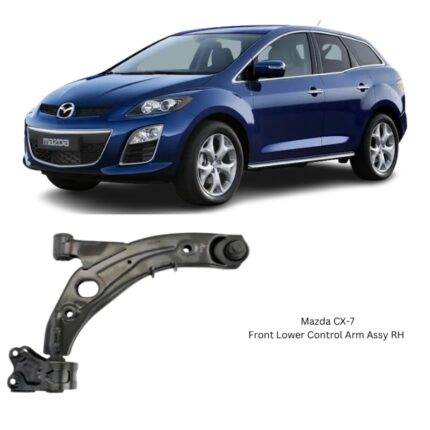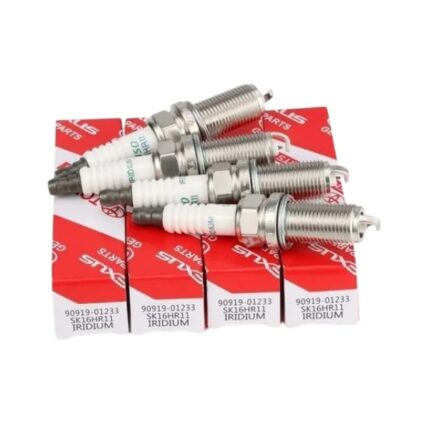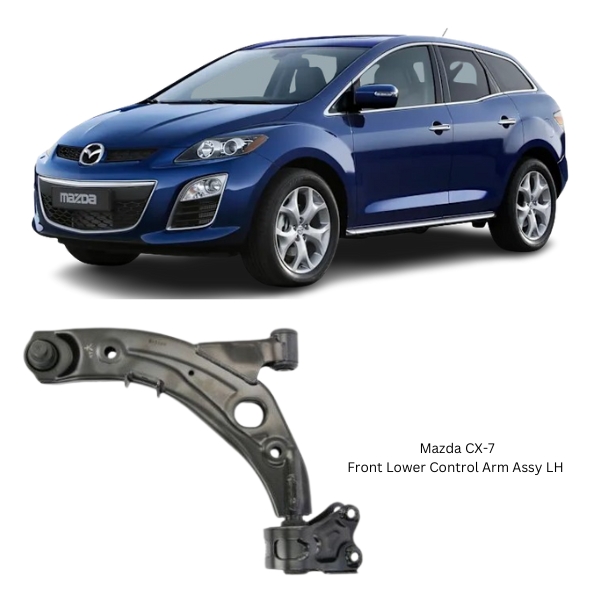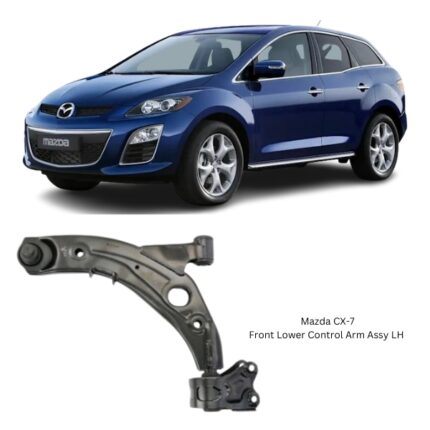Get Mazda CX-7 Front Lower Control Arm Assy LH EG21-34-350D in Kenya
The Front Lower Control Arm Assembly LH (Left-Hand) is a critical suspension component located on the front-left side of a vehicle. Its primary function is to connect the vehicle’s frame or subframe to the steering knuckle, allowing the wheel to move vertically while maintaining proper alignment and control. The lower control arm plays a key role in managing the vehicle’s ride quality, handling characteristics, and stability. In suspension systems such as MacPherson strut and double-wishbone setups, the control arm is essential for absorbing road impacts and managing load distribution.
1. What Is the Front Lower Control Arm Assembly LH?
The Front Lower Control Arm Assembly LH is part of the suspension system that allows controlled movement of the front-left wheel. It supports both the vertical motion caused by road irregularities and the lateral forces experienced during cornering or braking. Typically made of high-strength steel, aluminum, or cast iron, the control arm houses bushings and a ball joint that connect it to the vehicle chassis and steering knuckle.
This assembly is responsible for guiding the wheel in a specific path while keeping it stable and correctly aligned relative to the body of the vehicle.
2. Key Components of the Lower Control Arm Assembly LH
The control arm assembly includes several parts, each with its own distinct function:
-
Arm Body: A metal structure (often stamped steel or forged aluminum) designed to provide structural strength and maintain suspension geometry.
-
Bushings: Made from rubber or polyurethane, bushings connect the control arm to the chassis and allow pivoting while dampening vibrations.
-
Ball Joint: A spherical joint that connects the control arm to the steering knuckle, enabling smooth turning and up-down wheel movement.
-
Mounting Points: Attachment areas that connect the arm securely to the frame or subframe with bolts and fasteners.
3. Function of the Front Lower Control Arm LH
a) Suspension Articulation
The control arm allows the wheel to move vertically over bumps, potholes, and other road imperfections while preventing excessive forward or backward movement.
b) Maintaining Alignment
It holds the wheel in the correct position, preserving camber, caster, and toe angles critical for steering stability and even tire wear.
c) Structural Support
The arm helps transfer forces between the wheel and the chassis, especially during acceleration, braking, and turning.
d) Connection to Other Components
It serves as a mounting base for the strut, stabilizer link, or sway bar and interacts with other suspension parts.
4. Advantages of a High-Quality Lower Control Arm LH
-
Improved Handling: Maintains optimal suspension geometry, enhancing vehicle responsiveness during cornering and maneuvers.
-
Reduced Tire Wear: Keeps wheels aligned to prevent premature or uneven tire wear.
-
Noise and Vibration Reduction: Proper bushings and joints absorb road noise and dampen vibration for a quieter ride.
-
Enhanced Safety: Maintains wheel stability and integrity under braking, cornering, and uneven surfaces.
-
Durability: Built to resist fatigue, corrosion, and impact stresses common in daily driving or off-road use.
5. Common Signs of a Faulty Front Lower Control Arm LH
When the control arm or any of its components wears out or fails, several symptoms may arise:
-
Clunking or Knocking Sounds – Often heard during turns or when going over bumps, caused by worn ball joints or bushings.
-
Steering Issues – Difficulty maintaining a straight line, delayed steering response, or pulling to one side.
-
Uneven Tire Wear – Camber or caster misalignment caused by a bent or loose control arm can lead to inner or outer tire edge wear.
-
Excessive Vibration – Felt through the steering wheel or cabin due to worn bushings or unstable wheel geometry.
-
Braking Instability – The vehicle may nosedive or feel unstable when braking if the control arm can’t maintain proper wheel positioning.
6. Causes of Wear or Damage
-
Normal Wear and Tear: Bushings and ball joints deteriorate over time with mileage and usage.
-
Potholes and Rough Roads: Sudden shocks from road defects can bend or crack the control arm.
-
Corrosion: Moisture, road salt, and grime can lead to rust and weaken the arm, especially in steel variants.
-
Accidents and Curb Hits: A strong impact can deform or break the arm or damage the mounting points.
-
Overloading: Carrying loads beyond vehicle specifications adds excessive stress on the suspension system.
7. How to Replace the Front Lower Control Arm LH
While professional installation is recommended, skilled technicians or experienced DIYers can replace the arm with the proper tools and safety precautions.
Tools Required:
-
Jack and jack stands
-
Lug wrench
-
Wrenches and socket set
-
Ball joint separator
-
Pry bar
-
Torque wrench
Steps:
-
Safety First: Park the vehicle on level ground, engage the parking brake, and use wheel chocks.
-
Raise the Vehicle: Use a jack to lift the front left side and support it with jack stands.
-
Remove the Wheel: Exposes the control arm and suspension components.
-
Disconnect the Ball Joint: Use a separator tool to detach the ball joint from the steering knuckle.
-
Unbolt the Control Arm: Remove the bolts holding the arm to the chassis or subframe.
-
Install the New Arm: Position the new control arm, insert bolts, and torque to manufacturer specifications.
-
Reconnect Ball Joint: Tighten to spec and ensure a secure fit.
-
Reinstall Wheel and Lower Vehicle
-
Wheel Alignment: A professional alignment is essential after replacing suspension parts to ensure correct handling and tire wear.
8. Maintenance Tips for Longevity
-
Routine Inspection: Check for visible signs of wear or damage during regular service intervals.
-
Lubricate Ball Joints: If equipped with grease fittings, keep joints lubricated to prevent premature failure.
-
Wash Undercarriage: Especially after exposure to road salt or mud, to reduce corrosion risk.
-
Avoid Aggressive Driving: Slow down on rough terrain to reduce stress on the control arm.
-
Replace in Pairs When Necessary: If one control arm is failing, the other may soon follow due to symmetrical wear.
9. RH vs. LH – Understanding the Difference
The Left-Hand (LH) and Right-Hand (RH) control arms are not interchangeable. They are uniquely shaped and oriented to match each side’s suspension layout. Differences include:
-
Geometry and Bushing Angles: Each is designed to complement the vehicle’s steering and suspension geometry.
-
Mounting Points: Position and spacing of attachment points differ.
-
Ball Joint Configuration: Ball joints may have different alignment angles depending on side-specific steering dynamics.
Follow us on Facebook for more parts.





Reviews
Clear filtersThere are no reviews yet.